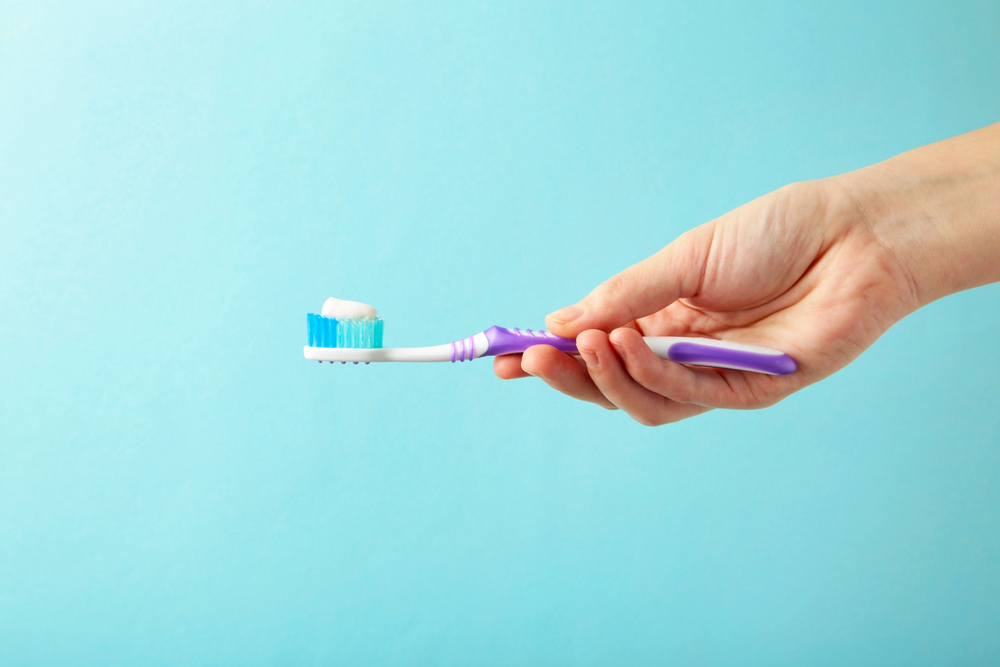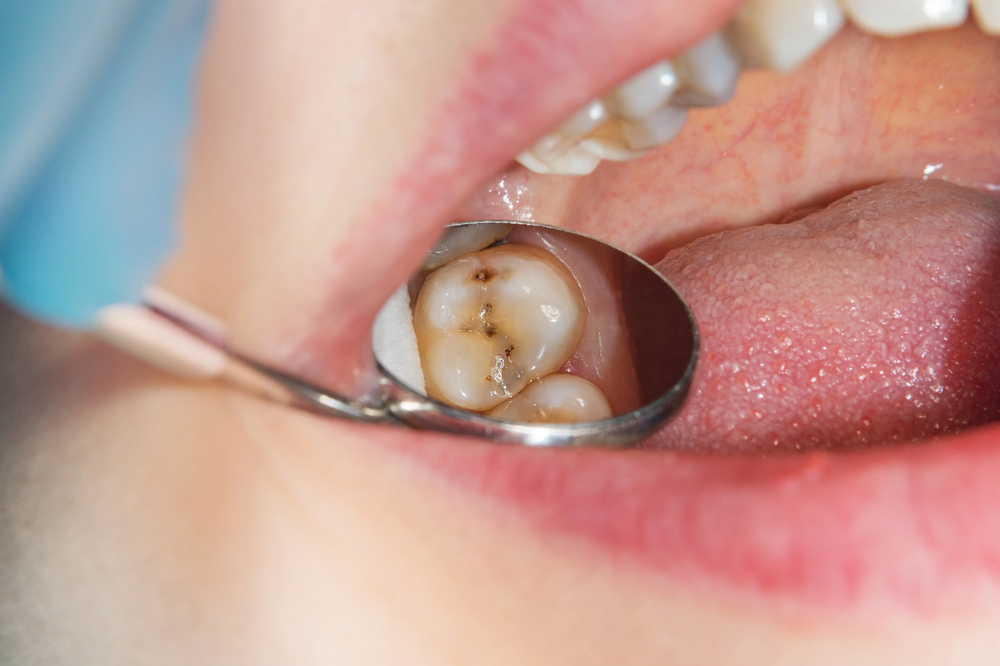How can we prevent tooth decay? The solution often lies in simple habits practiced consistently over time. Decay does not happen overnight. It develops gradually, which means your daily oral hygiene routine has a powerful impact on long-term oral health. At our practice, we focus heavily on prevention because small steps taken early can make a significant difference. When you know what contributes to decay and what supports enamel strength, it becomes much easier to protect your smile for years to come.
What is tooth decay? A simple definition
Tooth decay, also known as dental caries, happens when acids produced by bacteria begin breaking down your tooth enamel. Over time, this can lead to soft spots, cavities, and eventually deeper damage that affects the dentin and pulp. If decay is caught early, there are opportunities to intervene and prevent tooth loss.
How tooth decay develops: Step-by-step process

It starts with bacteria
The decay process begins with bacteria in your mouth. When you eat or drink anything containing carbohydrates, the sugar and bacteria combine, creating acids. Each acid attack can last up to 20 minutes after you finish eating, especially when snacking frequently. These repeated attacks slowly weaken tooth enamel and increase the risk of cavities forming.
Plaque formation and enamel breakdown
If plaque buildup is not removed through brushing and flossing, it hardens over time and continues to trap bacteria against your tooth surfaces. This accelerates enamel erosion and creates an ideal environment for decay. Even individuals who brush and floss daily may experience issues if technique or frequency is insufficient.
Stages of decay: Early demineralization to deep cavities
The first stage of decay is early demineralization, which shows up as white spots on the enamel. At this point, fluoride toothpaste, preventative dental treatments like Curodont, and improved diet and oral hygiene habits can often stop or reverse the damage. If decay progresses, a cavity forms, creating a permanent hole that requires a dental filling.
When decay reaches dentin and pulp
As decay moves past the enamel, it reaches the dentin, which is softer and allows cavities to spread more quickly. Early interventions when the onset of dentin is compromised can include dental application of Silver Diamine Fluoride (SDF) and other remineralizing dental products. If ignored, decay eventually reaches the pulp, causing pain, infection, and the need for root canal therapy. Early intervention is essential for protecting your teeth and avoiding more invasive treatments.
Types of cavities dentists commonly see
Pit and fissure cavities
These cavities form in the grooves of back teeth, where food easily becomes trapped. Dental sealants are especially helpful for preventing decay in these areas by creating a protective barrier over deep grooves.
Smooth surface cavities
These appear on the flat surfaces of teeth and often develop due to improper brushing, flossing, or plaque accumulation along the gumline.
Root surface cavities
More common in older adults, these cavities form when gum recession exposes the root surfaces. Since roots do not have enamel, they decay more quickly and require closer monitoring.
What causes tooth decay? Key factors to know
Understanding these risk factors is the first step in learning how to prevent tooth decay and protect your teeth from long-term damage.
High sugar and acidic diets
Sugary and acidic foods and drinks are the most significant contributors to decay. They fuel bacteria, increase acid attacks, and weaken enamel. Even healthy items like fruit juice or dried fruit can contribute if consumed frequently. Remember, sugar come from carbohydrates. This includes foods such as pastas and breads
Poor brushing and flossing habits
Inconsistent brushing and flossing allow plaque to stay on tooth surfaces and produce acids throughout the day. Inadequate cleaning also increases risk near the gumline and between teeth.
Dry mouth and lack of saliva
Saliva neutralizes acids, strengthens enamel, and helps rinse away food particles. Anything that reduces saliva flow raises decay risk. This includes certain medications, dehydration, aging, and mouth breathing.
Medical conditions and medications that increase risk
GERD, eating disorders, autoimmune conditions, and chemotherapy can all weaken enamel or reduce saliva. Some medications list dry mouth as a side effect, which makes it harder to prevent tooth decay.
Age, lifestyle, and tooth position
Crowded teeth trap more plaque. Vaping and smoking also reduce saliva and harm oral health. Age-related enamel thinning makes decay more likely in older adults.
How can we prevent tooth decay? Daily habits that work

Brushing technique and fluoride toothpaste
To prevent tooth decay, be sure to brush twice a day with a fluoride toothpaste. Use small circular motions, angle the bristles toward the gumline, and take at least two minutes. Fluoride helps rebuild weakened enamel and strengthens it against future acid attacks.
Flossing and interdental cleaning
Flossing removes plaque between teeth, where most adult cavities begin. If floss is difficult to maneuver, interdental brushes or water flossers are excellent alternatives.
Tongue cleaning and effective mouthwash use
The tongue holds a surprising number of bacteria that contribute to decay and bad breath. Gentle tongue cleaning paired with fluoride mouth rinses adds an extra layer of cavity protection.
Hydration, saliva flow, and sugar-free gum
Drinking water throughout the day supports saliva production, washes away food debris, and helps maintain a healthy environment in the mouth. Sugar-free gum with xylitol can stimulate saliva and slow harmful bacteria.
At-home oral hygiene tips to strengthen teeth
Choosing the right toothbrush and tools
Soft bristles are ideal for protecting enamel and gums. Electric toothbrushes can be especially effective for reducing plaque buildup.
Replacing your toothbrush regularly
A worn toothbrush cannot clean effectively. Replace yours every three months or sooner if the bristles splay outward.
Morning and nighttime cleaning routines
Morning brushing removes overnight plaque. Nighttime brushing is even more important because saliva production slows while you sleep. This is the ideal time to also use mouth rinses and flossing tools.
How diet and lifestyle affect tooth decay risk
Foods that protect enamel
High calcium foods support enamel strength. Crunchy fruits and vegetables stimulate saliva flow, and green tea contains compounds that can help control bacteria.
Sugary, acidic, and sticky foods to limit
Limit sodas, sports drinks, candies, dried fruits, and sweetened beverages. These foods and drinks stick to tooth surfaces and fuel bacteria for long periods.
Snacking frequency and sipping habits
Frequent snacking causes repeated acid attacks. Water is the best option to sip throughout the day. Save sugary drinks for occasional treats and drink them with meals instead of alone.
Lifestyle factors: vaping, smoking, GERD, eating disorders
These habits and conditions can weaken enamel, dry the mouth, and increase exposure to stomach acids. Addressing underlying causes lowers the risk of enamel erosion and decay.
Early signs of tooth decay to never ignore
Early decay may not cause pain. Watch for:
- white or brown spots
- sensitivity to sweets
- mild discomfort with cold or heat
- rough areas on the tooth surface
- food trapping in the same place
Noticing issues early helps prevent tooth loss and protects long-term oral health.
Complications of untreated tooth decay
Early detection and consistent care are key to preventing cavities and supporting long-term oral health. Ignoring decay allows it to spread deeper, leading to infections, severe pain, abscesses, and eventually the need for root canal therapy or extractions. Untreated decay can also impact overall health, making regular dental checkups even more important.
Need help preventing tooth decay? Schedule a visit with Ashley Harrison, DDS.
The best way to keep your smile healthy is to visit your dentist regularly. Professional cleanings, dental sealants, fluoride treatments, and early detection make a significant difference. If you want support with preventing future cavities, Ashley Harrison, DDS provides personalized care to help you maintain strong enamel and reduce the risk of dental problems at every stage of life.
FAQ
What causes tooth decay?
Tooth decay occurs when bacteria in your mouth feed on sugars and produce acids that gradually erode enamel. This process starts with plaque buildup on the teeth. When plaque is not removed effectively through brushing and flossing, it continues to trap bacteria and fuel more acid attacks. Diet plays a major role, especially if you eat sugary or acidic foods frequently. Dry mouth, certain medications, and medical conditions can also increase risk by reducing saliva, which normally helps neutralize acids. Genetics, age, lifestyle habits, and oral hygiene routines all contribute. While anyone can develop decay, consistent home care and routine dental visits greatly reduce the risk.
How can we prevent tooth decay?
Prevention begins with strong daily habits. Brushing twice a day with fluoride toothpaste, flossing, and using mouth rinses are essential. Choosing water over sugary drinks, limiting frequent snacking, and eating foods that support enamel can help protect your teeth. Staying hydrated promotes saliva flow, which naturally neutralizes acids. Using sugar-free gum can also support oral health. Routine dental cleanings, fluoride treatments, and dental sealants provide additional protection. Most importantly, visiting your dentist regularly allows early detection and treatment before decay worsens. With consistent care, most cases of decay can be prevented.
Can tooth decay be reversed?
Early-stage decay, known as demineralization, can sometimes be reversed before a cavity forms. At this stage, the enamel has begun to lose minerals, but the surface is still intact. Fluoride toothpaste, fluoride treatments, and improved oral hygiene can help rebuild weakened enamel and stop the progression of early decay. However, once a cavity forms and a hole develops, it cannot heal on its own. Professional treatment, such as a filling, becomes necessary to restore the tooth. Regular dental visits are the best way to catch decay early enough to reverse it or stop it before it advances.


